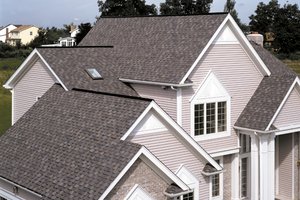Passive Roof Vents: Helping Your House Breathe Easy
Published: January 28, 2011
Passive roof vents expel excess heat and moisture. The key is to balance incoming air with outgoing, and perform an annual maintenance checkup.| Progress | K |
|---|---|
| Effort | Low 1 wknd (pro install) |
| Investment | Med $250-$1,000 (pro install) |
Passive roof vents encourage natural air flow and work without the aid of motorized fans. Roof vents enhance the overall comfort of the house by providing escape hatches for hot, stale, moist air, which can reach temperatures of 150 degrees in summer.
In winter, you need to dump that hot air before it condenses, which can lead to rot and mold. Warm air trapped in the attic during winter also may cause rapid melting of snow, which then refreezes as ice dams—mini glaciers that can push up shingles and peel off gutters and soffits.
How much roof ventilation?
The rule of thumb for proper attic ventilation calls for a minimum of 1 square foot of vent area (openings) for every 300 square feet of attic floor space. If you have asphalt shingles, you must have some kind of attic ventilation or you’ll risk voiding the warranty.Check your roof vents
You or a professional roofer should check your roof vents annually.- Periodically clear vent screens of dirt, leaves, dust, pollen, spider webs, bird nests, and other debris that impedes air flow.
- Repair screen rips or tears and damaged flashing.
- Check for rust or rot around the framing or flashing.
- Clear insulation from soffit vent openings. You’ll need to inspect from inside your attic. Make sure attic insulation stops clear of the under-eave area.
Roof vent options
- Ridge vents run along the peak of the roof. They feature an external baffle to increase air flow and protect your house from snow, rain, and dust. They’re usually capped with a material that blends in with the roof. It costs about $245 for a professional to install a 40-foot ridge vent.
- Static vents have no moving parts. They’re basically protected holes in the roof that allow air circulation. They come in various designs—roofline, dormer, roof louver, or eyebrow vents—and are installed in an even line across the roof. Some pros swear by them; others think they tend to leak. They cost between $35 and $50 per vent to install.
- Gable vents, or wall louvers, are placed in the gable ends of the attic and can be used in combination with other vents. The higher they are, the more effective. However, the airflow from gable vents is limited because they’re under the roof deck, resulting in hot spots. Professional installation costs about $185 per vent. Or, buy a set yourself and install them for $45 apiece.
- Wind turbines are mushroom-shaped caps atop roofs designed to catch natural wind currents, which spins an internal fan and propels hot air out of the attic. Wind turbines are most effective in areas where winds average about 5 mph.
Soffit vents provide a breath of fresh air
Getting rid of hot air is just part of the equation. You also need intake vents, which are usually soffit (or under-eave) vents. Made of aluminum or vinyl, they contain tiny perforations or slits for airflow, and are available as either narrow strips that butt together, or as smaller, wider vents that fit between roof joists.Soffit vents are most effective when used with a ridge vent. Most new houses have soffit vents, and they can be retrofitted on old ones. If you have only small gable or roof vents, putting in soffit vents will increase airflow.
Laura Fisher Kaiser is a contributing editor at Interior Design magazine, a former editor of This Old House, and writes the blog Secret Science Geek. She lives in Washington, DC.
Read more: http://www.houselogic.com/articles/passive-roof-vents-helping-your-house-breathe-easy/#ixzz1Cu6SIMWG







nghiên cứu thị trường
ReplyDeletecardio giảm cân
ridge Ventilator
ReplyDelete